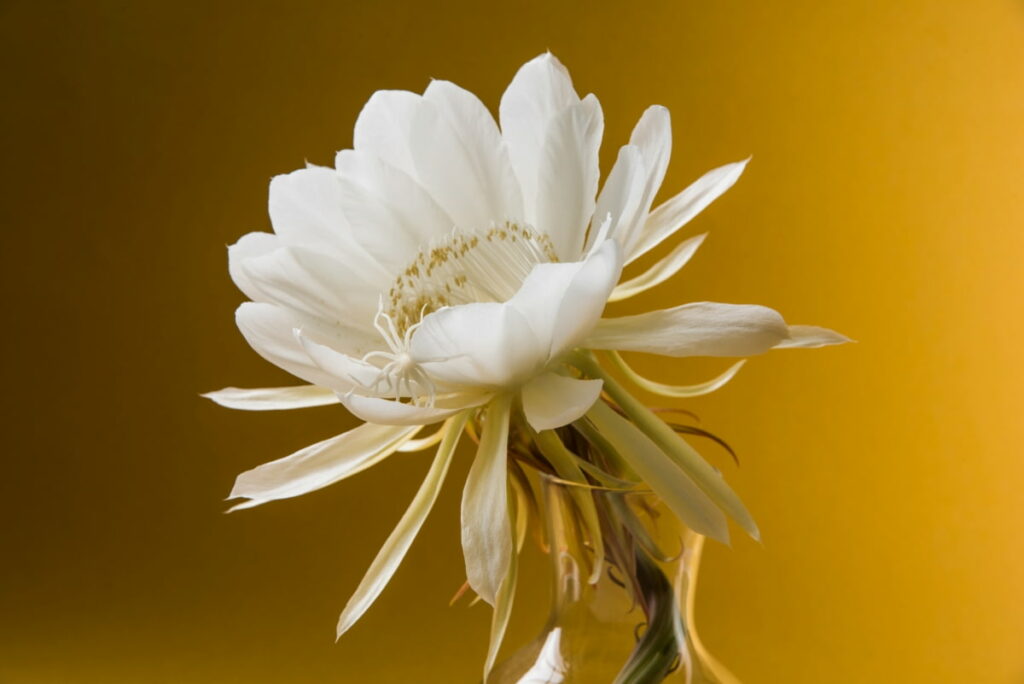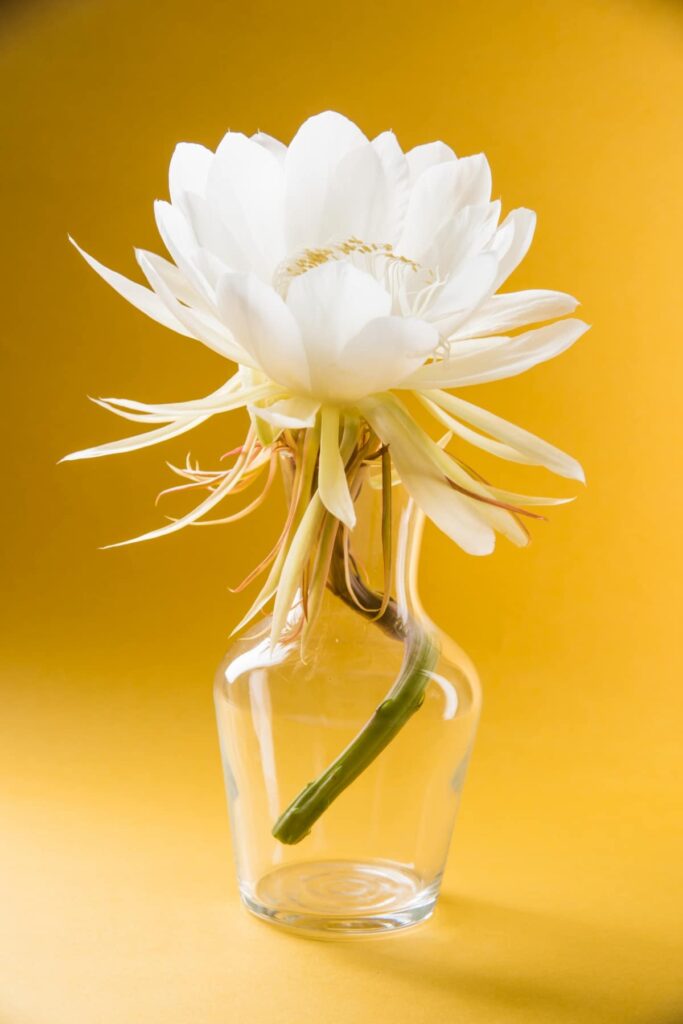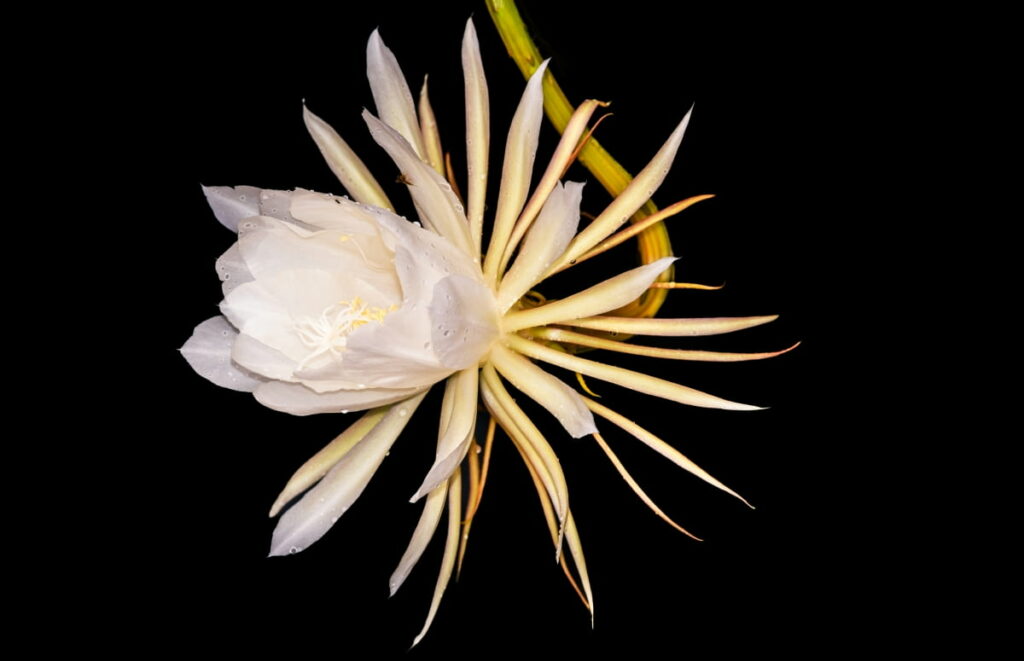The Brahma Kamal flower, also scientifically known as Saussurea Obvallata, is a stunning and exotic plant that can bring many benefits to your home garden. Its unique appearance and fragrance make it a standout addition to any outdoor space. Growing the Brahma Kamal flower requires careful consideration of its specific needs.

How to Grow Brahma Kamal Flower in the Home Garden
Select the Right Location for Brahma Kamal
It is crucial for their growth and blooming. These exotic flowers thrive in a cool and shaded environment, away from direct sunlight. Look for a spot in your garden that receives partial shade throughout the day. Consider planting them near taller trees or shrubs that provide some protection from intense sunlight during midday.
This will create a microclimate that suits these beautiful flowers perfectly. If you plan on growing Brahma Kamal indoors, choose a well-lit area with indirect light, such as near east-facing windows or under artificial grow lights. Ensure proper ventilation within the space to maintain optimal humidity levels.
Choose the Right Pot for Brahma Kamal
The size and material of the pot can play a crucial role in providing optimal conditions for your plant. Consider the size of the pot. Brahma Kamal has a deep root system, so it’s recommended to choose a pot that is at least 12-16 inches deep. Next, think about the material of the pot. Terra cotta pots are popular choices for Brahma Kamal as they provide good drainage and allow air circulation around the roots. Additionally, make sure that your chosen pot has drainage holes.
Soil Preparation for Brahma Kamal
The right soil will provide the nutrients and drainage for these delicate plants to thrive. Start by selecting well-draining soil that is rich in organic matter. This will ensure proper moisture retention while preventing waterlogged roots. You can mix compost or aged manure into the soil to enrich it further. Next, loosen the soil carefully by using a garden tiller or fork.
This helps improve aeration and allows the plant’s roots to penetrate easily. Avoid compacted soil, as it can stunt root development and prevent nutrient absorption. If you’re growing Brahma Kamal in pots, choose a well-draining potting mix specifically formulated for flowering plants. Consider conducting a pH test on your soil before planting. Brahma Kamal thrives best in slightly acidic to neutral soils with a pH range of 6-7.
Plant Brahma Kamal Seeds or Seedlings
When planting Brahma Kamal seeds, it’s important to ensure that they are fresh and of good quality. Start by soaking the Brahma Kamal seeds overnight in water to enhance germination. Next, prepare a well-draining potting mix using equal parts of peat moss, perlite, and vermiculite. Sow the seeds on top of the soil and cover them with a thin layer of vermiculite. Mist the soil gently to keep it moist but not waterlogged. Place the pot in a warm location with indirect sunlight.
In case you missed it: Balcony Vegetable Gardening in India: Ideas for Apartments, Villas, and Independent Homes

If you prefer using seedlings, select healthy plants from your local nursery or online store. Transplant them into larger pots filled with well-draining soil mix. Ensure that each plant has enough space for its roots to spread out comfortably. Water regularly, but avoid over-watering as excessive moisture can lead to root rot.
Water and Moisture Requirements for Brahma Kamal
To ensure that your Brahma Kamal plants thrive, it is essential to understand their water and moisture requirements. Brahma Kamal prefers well-drained soil that retains some moisture but does not become waterlogged. Water your Brahma Kamal regularly, but allow the soil top inch to dry out between watering sessions. To maintain appropriate moisture levels in the soil, consider using mulch around your Brahma Kamal plants. Mulching helps retain moisture and prevent evaporation from the soil surface.
Provide Proper Sunlight for Brahma Kamal
Ideally, Brahma Kamal requires bright but indirect sunlight. It is best to place your plant in an area where it can receive morning sun or filtered light throughout the day. Direct exposure to harsh afternoon sun can scorch the delicate leaves and petals of this beautiful flower. If you are growing Brahma Kamal indoors, placing it near a west or east-facing window would be ideal. You can also use sheer curtains to filter out excessive direct sunlight during peak hours. If you are cultivating Brahma Kamal outdoors, look for a spot that offers partial shade during hot summer afternoons.
Temperature and Humidity Considerations for Brahma Kamal
This exquisite flower thrives in cool to moderate temperatures, ideally between 15°C to 25°C. It is crucial to provide a stable temperature for the plant, as drastic fluctuations can negatively impact its growth. During the winter months, make sure to protect the Brahma Kamal from freezing temperatures by moving it indoors or providing adequate insulation.
In hotter climates, providing some shade during peak afternoon hours can help prevent heat stress and sunburn on the delicate petals. Humidity levels play a main role in the health of Brahma Kamal flowers. These plants prefer high-humidity environments, so misting them regularly or placing a tray filled with water nearby can create an ideal microclimate for their growth.
Fertilize and Feeding Brahma Kamal Plants for Good Blooms
Balanced organic fertilizer will provide the necessary nutrients without risking chemical burns or other negative effects. Apply the fertilizer based on the package instructions, taking care not to overdo it as this can lead to excessive foliage growth rather than flowering. In addition to regular fertilization, consider supplementing with natural ingredients like compost or worm castings.
These organic amendments enrich the soil and promote overall plant health. Feeding your Brahma Kamal plants should also include providing adequate water. Every plant has its own unique needs, so observe your Brahma Kamal closely for signs of deficiencies or excesses in nutrients. Adjust your feeding schedule accordingly based on their response.
Prune and Maintain the Brahma Kamal Plant
Regular pruning helps remove dead or diseased leaves and promote new plant growth to maintain its desired form. When it comes to pruning Brahma Kamal plants, it’s important to be gentle yet thorough. Start by inspecting the plant for any signs of damage or disease. If you spot any yellow or wilted leaves, carefully remove them using sanitized pruning shears.
In case you missed it: How to Design a Balcony Garden for Year-round Harvests

Next, focus on shaping the plant by trimming back any overgrown branches or stems. In addition to regular pruning, proper maintenance is crucial for keeping your Brahma Kamal healthy. This includes watering consistently but avoiding overwatering, which can lead to root rot. Keep an eye out for pests such as aphids or mealybugs that may attack your Brahma Kamal plant. If detected early, treat with organic insecticides or neem oil spray.
Brahma Kamal Plant Care
- Watering: Keep the soil moist and water the plant deeply whenever the top inch of the soil feels dry.
- Mulching: Apply an organic mulch layer around the plant base to help retain moisture, suppress weed growth, and regulate temperature.
- Pest Control: Monitor your plants for any signs of pests like aphids or spider mites. If some pests, use organic pest control methods or insecticidal soaps to eliminate them.
- Winter Care: In colder climates, protect your Brahma Kamal plants during winter by moving potted ones indoors or providing adequate insulation in garden beds with straw or frost cloth.
Frequently Asked Questions (FAQ) on Growing Brahma Kamal
Can Brahma Kamal Be Grown in Pots?
Absolutely. Brahma Kamal can thrive beautifully in pots, making it a perfect choice for those with limited garden space or who prefer container gardening. Just ensure that the pot you choose is large enough to accommodate the plant’s root system and has good drainage.
Can I Propagate Brahma Kamal from Seeds?
Yes, you can start new plants from seeds collected from mature flowers after they have dried out completely on the plant itself.
Can I Keep My Plants Outside During Winter?
Brahma Kamal prefers warmer temperatures, so they will not survive frosty winters. It’s best advised to bring them inside before winter sets in.
In case you missed it: How to Grow Milky Mushrooms at Home: A Step-by-Step Guide

Conclusion
The Brahma Kamal flower holds immense importance in a home garden. Its unique beauty and enchanting fragrance make it a prized possession for any gardener. This beautiful flower has long been revered for its spiritual significance in many cultures. Known for its ethereal beauty and enchanting fragrance, the Brahma Kamal is a prized addition to any garden.
- How to Raise Pigs in Your Own Backyard: A Comprehensive Guide
- Budget Friendly Sheep Shed Ideas: Cheap and Low-Cost Tips
- How Much Do Cattle Farmers Make: Revenue Streams in Cattle Farming
- Management Pests and Diseases in Your Cotton Field
- Sheep Farming Business Plan for Beginners
- Aquaponic Farming at Home: A Step-By-Step Guide
- Profitable Village Farming Business Ideas in 2024
- High-Yield Aquaculture: Fast-Growing Fish for Farming
- Effective Fish Pond Construction Techniques for Beginners
